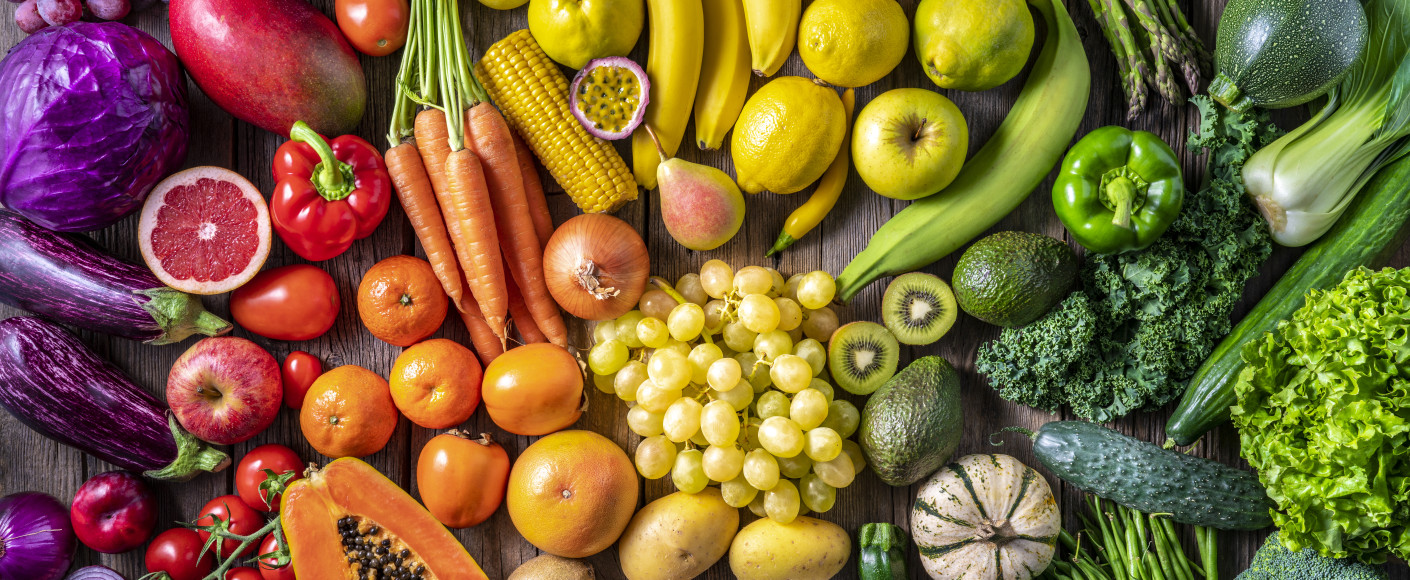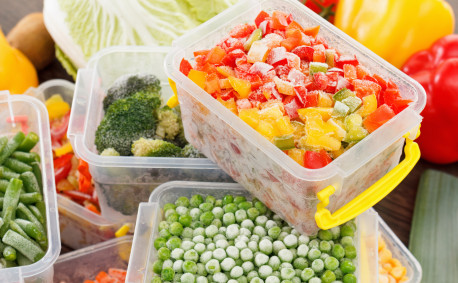How to Eat More Fruits and Vegetables
Do you have a hard time working the recommended servings of fruits and vegetables into your diet? From meals to snacks, it can be challenging to get those five portions a day. Whether you have a picky eater at home, are short on time or could simply use some fresh ideas, we have strategies to help you sneak in extra fruits and veggies.
If You Forget to Reach for Fruits and Vegetables
Put Them Top of Mind
You can’t eat what you don’t have on hand, so shop smart. Heed the advice to shop the perimeter of the grocery store — the produce, dairy and meat sections — where you’ll find nutrient-dense foods like fruits and vegetables.
You also can’t eat what you don’t know you have, so store your fruits and vegetables in a spot where they’re easy to see and look nice. A designated fruit bowl on your counter or a refrigerator bin just for vegetables will help make them more accessible and appetizing.
Look for produce in season for peak flavor and to liven up your menu. Cherries, sweet corn and peaches in summer and green and root vegetables in winter are a few of our favorites to find fresh from the farm.
If you have a picky eater, look for u-pick adventures in Kansas. When kids (and adults!) have a hand in their food, they’re more likely to try different things. Entertainment meets nutrition — win-win!
If You’re Short on Time
Make Them an Easy Option
Prepackaged conveniences such as shredded carrots, sliced mushrooms and grape tomatoes cut down on prep time, making them a quick and appealing choice.
Set aside time when you get home from the grocery store or on a designated day to prep your produce. By cutting and chopping on the heels of that errand or on a particular day or evening, you’ll set yourself up for success by making them easier to grab throughout the week.
Stock up on ready-to-eat fruits and vegetables such as grapes (one of our colleagues swears by freezing them for a sweet snack), apples, bananas, clementines, sugar snap peas and grape tomatoes. Having these easy options can take the headache out of snack time.
If You Want More Flavor
Pair Them with Other Foods
If the idea of eating plain fruits and vegetables doesn’t appeal to you, think of them as vehicles for tasty dips and sauces. Hummus, peanut butter and dips are great ways to add flavor while still getting in some fruits and veg. Baby carrots, apple slices, bell pepper strips and sugar snap peas are great for dipping.
Hide them, even in plain sight. Try incorporating vegetables into your favorite recipes to add flavor, texture and fiber. Broccoli, spinach and peas go well with macaroni and cheese for a healthier version of a comfort classic. You can also substitute vegetables for other ingredients. Swap cauliflower rice or spiral zucchini noodles for regular rice or pasta. If you’re hesitant to build an entire meal around them, try replacing half the amount to start.
Add them to your meals throughout the day. Breakfast provides a great opportunity to add fruits to oatmeal, yogurt or cereal. If you love sandwiches for lunch, bulk them up by adding tomatoes, lettuce, spinach, cucumbers, sprouts, olives, peppers, avocadoes and more. Include leftover or frozen vegetables as a side at dinner.
If You’re Getting Bored with the Same Dishes
Experiment with Preparation
Roasting, broiling and sautéing bring out different flavors in vegetables. Poached and grilled fruits make delicious toppings for desserts. Try new cooking methods to introduce more variety into your meals.
Preparation methods such as pureeing, blending or juicing can help you incorporate fruits and vegetables in different ways. (Yes, they have the same nutrients and fiber!) Processing some or all the vegetables in soups will yield a thicker dish. Chopped peppers or kale can complement ground beef. Blending different fruit — and even greens — in a smoothie is a great way to add variety. Even juicing, provided the blend is 100% juice, is a great option.
More Tips to Keep in Mind
In addition to these life hacks to get more fruits and vegetables, consider a few more strategies.
- Start small. When you’re introducing a new habit, it’s easy to want to do everything all at once. But take things slow and work up to those five servings a day. If you’re barely getting one serving now, add some berries to your morning oatmeal or yogurt. Add sliced tomatoes and olives to your pepperoni pizza. Little improvements will add up. Start small so it feels doable, then build on your wins. You’ll get to five in no time!
- As the saying goes, eat a rainbow. That rainbow — a variety of fruits and vegetables — comes with more than just different colors. It also comes with different nutrients, helping you get a wider variety of vitamins and minerals. And the rainbow will help keep food boredom at bay.
- Consider canned and frozen produce. It doesn’t matter if you eat fresh, frozen or canned fruits and vegetables. They all have health benefits. So don’t feel guilty about reaching for frozen peas or canned corn! Our only tip would be to try to avoid fruit stored in syrup, as that will add extra sugar to your diet.
- Plan for picky eaters. Mealtimes don't have to be a fight. Simple hacks such as eliminating distractions can help them open up their minds and mouths to new foods.
How Big Is a Serving
The World Health Organization (WHO) developed the standard recommendation of five servings of fruits and vegetables per day, measured as 400 grams or 0.88 of a pound. So, a serving size will vary in volume depending on how much a given fruit or vegetable weighs.
Here are some examples of what constitutes a serving.
- Apple: 1 medium
- Avocado: ½ cup (or ½ medium)
- Banana: 1 medium (Fun fact: The name for a single banana is a finger!)
- Blueberries: ½ cup
- Broccoli: ½ cup
- Cabbage: ½ cup
- Corn: 1 ear or ½ cup kernels
- Grapefruit: ½ medium
- Lettuce: 1 cup
- Tomato sauce: ½ cup
- Tomatoes: 2 slices
The USDA MyPlate guidelines may vary slightly from the WHO recommendation depending on your age, gender, height, weight and physical activity. The general guidance is to fill half your plate with fruits and vegetables at every meal. Visit the MyPlate Plan to calculate a personalized target.
You can even take it a step further. The Mayo Clinic suggests a framework for eating six servings per day by following their 1-2-3 method. It’s simple: You eat one serving with breakfast, two with lunch and three with dinner. As you get more comfortable with five servings, consider leveling up to six!
Health Benefits of Fruits and Vegetables
Fruits and vegetables are packed with fiber, vitamins, minerals and phytochemicals, including vitamins A and C, potassium, folate, electrolytes and antioxidants. Studies have shown that most Americans don’t get adequate fiber or potassium in their diets.
Research has found that diets including five servings of fruits and vegetables can be linked to the following.
- Lower risk of heart disease
- Lower risk of stroke
- Lower risk of eye disease
- Lower risk of certain types of cancer
- Lower risk of diabetes
- Lower risk of osteoporosis
- Improved gastrointestinal health
- Improved cognitive function
- Improved weight management
- Lower blood pressure
- Lower cholesterol
We hope these tips and strategies help you incorporate this healthy habit into your daily meal planning!







